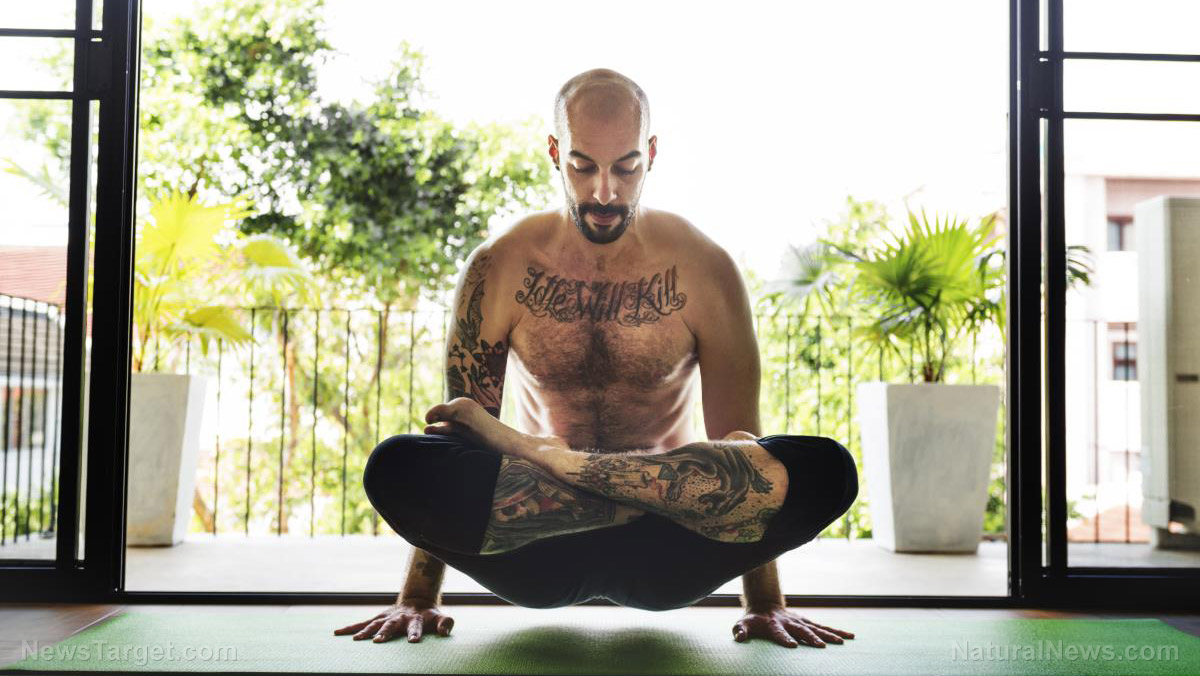
This outcome suggests that it is not only possible to integrate yoga and naturopathy together, but that doing so can provide a safe and effective potential way to manage MetS.
According to the American Heart Association, MetS encompasses people with at least three out of five cardiovascular risk factors: central obesity, elevated triglycerides, low high-density lipoprotein (HDL) cholesterol, systemic hypertension, and elevated fasting glucose.
MetS management relies upon non-pharmacological lifestyle interventions. Calorie restriction and therapeutic fasting – both of which are components of naturopathy – have been shown to be effective.
Yoga is another reportedly successful management method for MetS. Ancient yogic texts have identified the disorder and devised appropriate practices for its management. (Related: Bikram yoga not so hot after all: New study finds yoga benefits are the same at room temperature as they are for the hot Bikram version.)
Lifestyle intervention incorporated naturopathy and yoga practices
The case study involved a 50-year-old male who practiced a sedentary lifestyle who was admitted to the inpatient retreat center. There were no previous cases of metabolic syndrome in his family history.
The patient was overweight and suffered from weakness, low endurance, and bilateral knee pain. Furthermore, he was diagnosed with hypertension, diabetes mellitus, and hypothyroidism. Finally, he was taking oral hypoglycemic medication.
The researchers measured his baseline parameters while a team of consultants – including a physician, naturopathy, and a yoga expert – evaluated the patient for an integrated yoga and naturopathy protocol. His in-patient stay was six weeks.
The naturopathic therapies focused on detoxification. The patient undertook therapeutic fasting, a calorie-restricted diet, hydrotherapy, mud therapy, and manipulative therapies. The therapies were adjusted according to his response during the physician's daily assessment.
At the same time, the participant practiced an integrated yoga program with asanas (sitting postures), pranayama (breath control), meditation, relaxation techniques, kriyas (a series of postures, breath, and sound). He also received educative lectures and counseling sessions.
At the end of the inpatient protocol, the discharged patient was advised to follow a calorie-restricted vegetarian diet and another yoga program. Every week, he also practiced juice fasting.
The participant returned to the center for a follow-up examination eight and 12 weeks after. During these follow-up visits, the researchers reassessed his parameters.
Naturopathy and yoga techniques mesh well
At the end of the six-week intervention period, the patient showed improvements in all recorded parameters. Researchers recorded reduced weight and lower levels of total cholesterol, triglycerides, fasting blood glucose, postprandial glucose, HbA1c, and TSH.
Furthermore, he reported minimal knee pain on VAS, an improved sensation of wellness, and overall functional health. By the time of his discharge, the patient could stop taking allopathic anti-hypertensive, oral hypoglycemic, thyroid raising, and analgesic medicines.
The follow-up data showed that patient maintained his post-discharge IYN protocol. His reports indicate good glycemic control for the long run, and while his serum TSH levels did go up, they remained within normal levels.
The researchers attribute the significant changes to multiple factors: The integration of therapeutic fasting with sustained calorie restriction, naturopathy therapies, and yoga sessions; the absence of a family history of MetS; and adherence to follow-up protocol.
The integrated yoga approach turned out to be easy to maintain, given how the patient sustained results for two months following discharge.
The research team believes further studies could establish a formal integrated yoga and naturopathy protocol for the effective management of metabolic syndrome.
Sources include:
Please contact us for more information.























